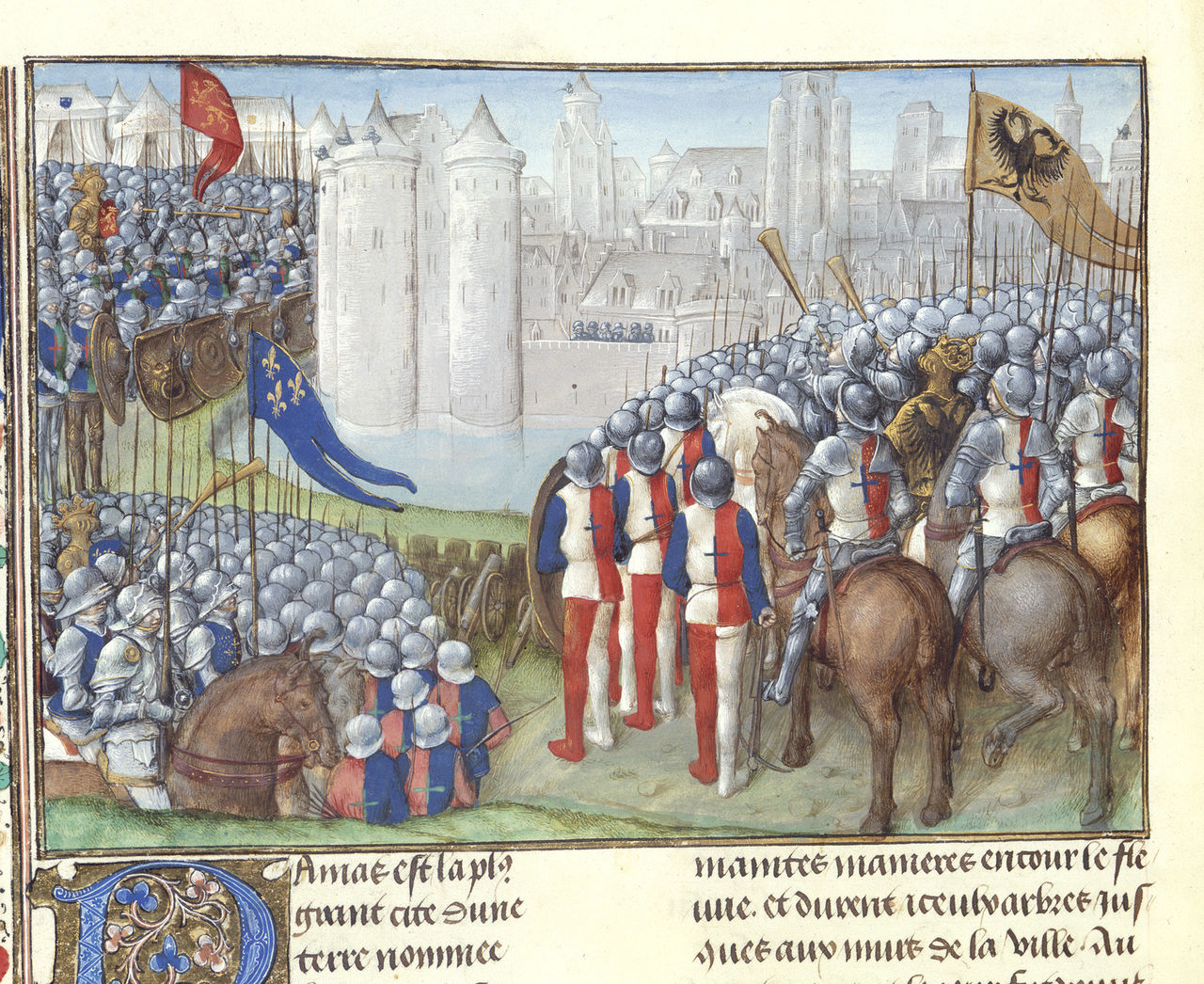In 1156 Frederick married the heiress to Burgundy, which had slipped out of imperial control during the Investiture Controversy. He made Switzerland the strategic center of his policy, for it controlled the Alpine passes into Italy. In Swabia he tried to build a compact, well-run royal domain, but he needed the loyalty of cooperative great vassals. And in Lombardy he also needed an alliance with the communes in the towns.
Frederick Barbarossa made six trips to Italy. He intervened first at Rome, where in 1143 a commune had risen up against papal rule. The leader of the commune, Arnold of Brescia, strongly favored the church’s return to apostolic poverty and simplicity. Barbarossa won papal good will by offering the pope assistance not only against Arnold but also against the Normans and against the Byzantine threat to southern Italy. He was crowned emperor in Rome in 1155. The pope, however, soon reached an accommodation with the Normans and quarreled with Frederick in 1157.
The Milanese resisted Frederick, and when a vigorous pope Alexander III (r. 1159-1181) came to power, Frederick faced the pope, and Milan and Sicily united. They drove him back into Italy, and in 1176 their forces defeated his at Legnano. With the Peace of Constance in 1183, Frederick gave up his claims to direct imperial authority in the Lombard cities.
To free himself for his Italian pursuits, Frederick Barbarossa made concessions to the German princes. His great WeIf rival, Henry the Lion, who was Frederick’s cousin, obtained the right to invest the bishops of several important sees; he also led a great wave of German eastward expansion into the Slavic lands across the Elbe. Henry married the daughter of Henry II of England.
In 1176, when Henry tried to bargain with Frederick over troops needed for Italy, Frederick summoned him to his royal court. A refusal to come enabled the emperor to declare Henry a “contumacious” vassal and later to seize his property (1180). In the same year, Frederick recognized his immediate vassals as princes of the empire, giving formal recognition to the new feudal order in Germany.
Four years before he died, in 1186, Frederick arranged the marriage of his son, Henry, to Constance, the heiress of Norman Sicily. When Henry VI (r. 1190-1197) married Constance, he acquired an extraordinary kingdom built up in less than two centuries by the descendants of the Norman adventurers. But the pope, the German Welfs, and King Richard I, the Lionhearted, of England jointly backed a rival of Henry for Sicily. Henry captured Richard and forced him to become his vassal and to break the alliance.
By 1194 Henry was supreme at Palermo, the Sicilian capital, and he refused to do homage to the pope. He was building up a fleet to invade the eastern Mediterranean when he died suddenly in 1197. Henry had widened the concept of empire, but he had sacrificed such unity as he might have achieved in Germany to the imperial dreams of union with Sicily. To persuade the German princes to recognize the hereditary rights of his son, Frederick II, to succeed him, he offered each of them hereditary rights in his own fief.

